The Carl Gustaf in the Dutch Army’s Armoured Infantry Platoon, 1972-73
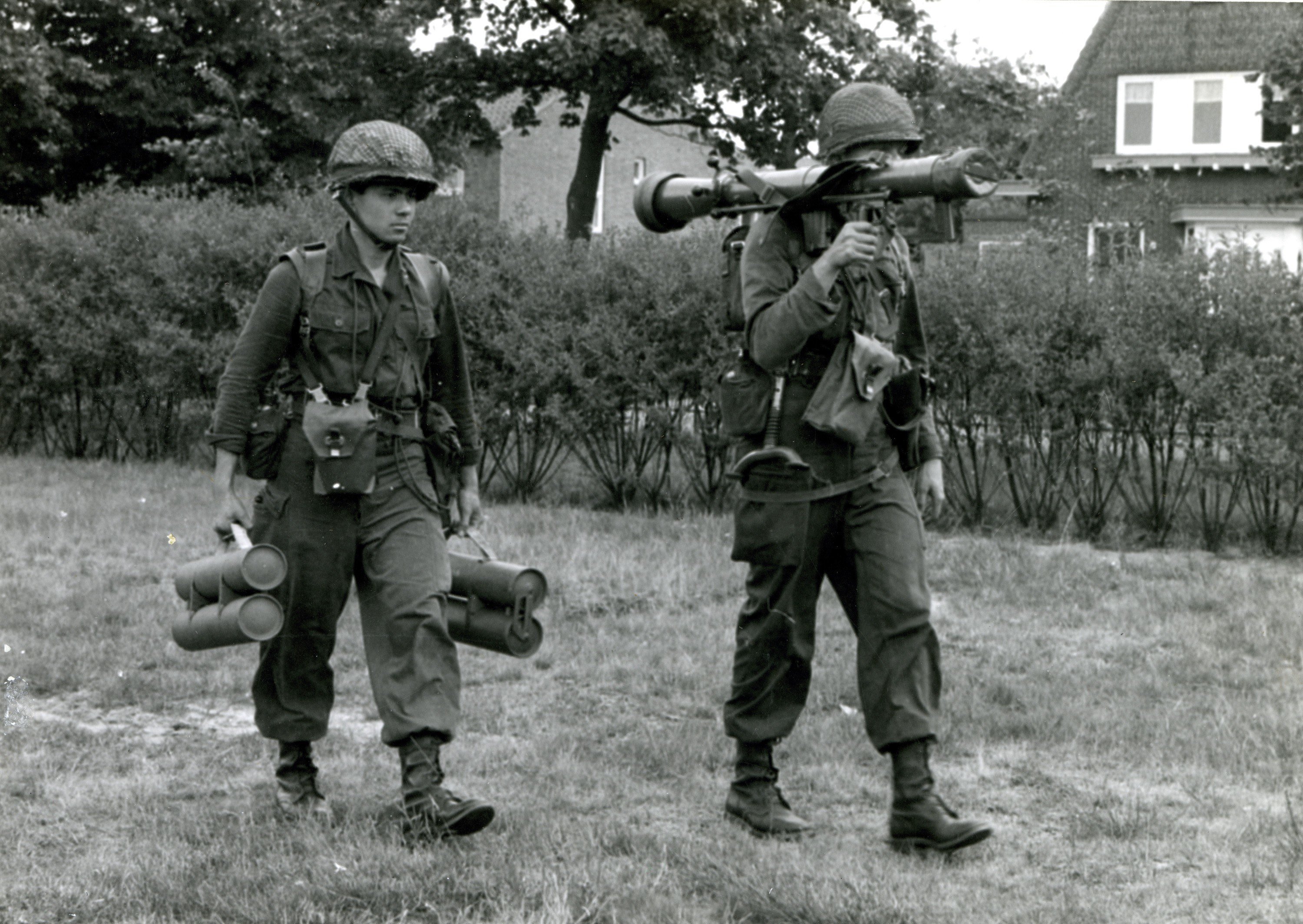
Introduction
Somewhat counterintuitively following on the discussion of the M47 Dragon and Milan as a platoon-level anti-tank weapon here and here, it seems wise to pay some attention to the Dragon’s partial predecessor - the Carl Gustaf M2 - and its role in the Dutch Army’s anti-armour philosophy.At the brigade-level, a 15-vehicle battery of self-propelled anti-tank guns was present in the form of the 105mm AMX-13. A capable machine on paper, the vehicles were mechanically unreliable, cramped, and generally disliked by their crews, which yielded them the nickname “Dinky Toy”. Still, the vehicles added some capability to the brigade, each vehicle capable of rapidly firing 12× 105mm HEAT-shells, before requiring the autoloader to be replenished.
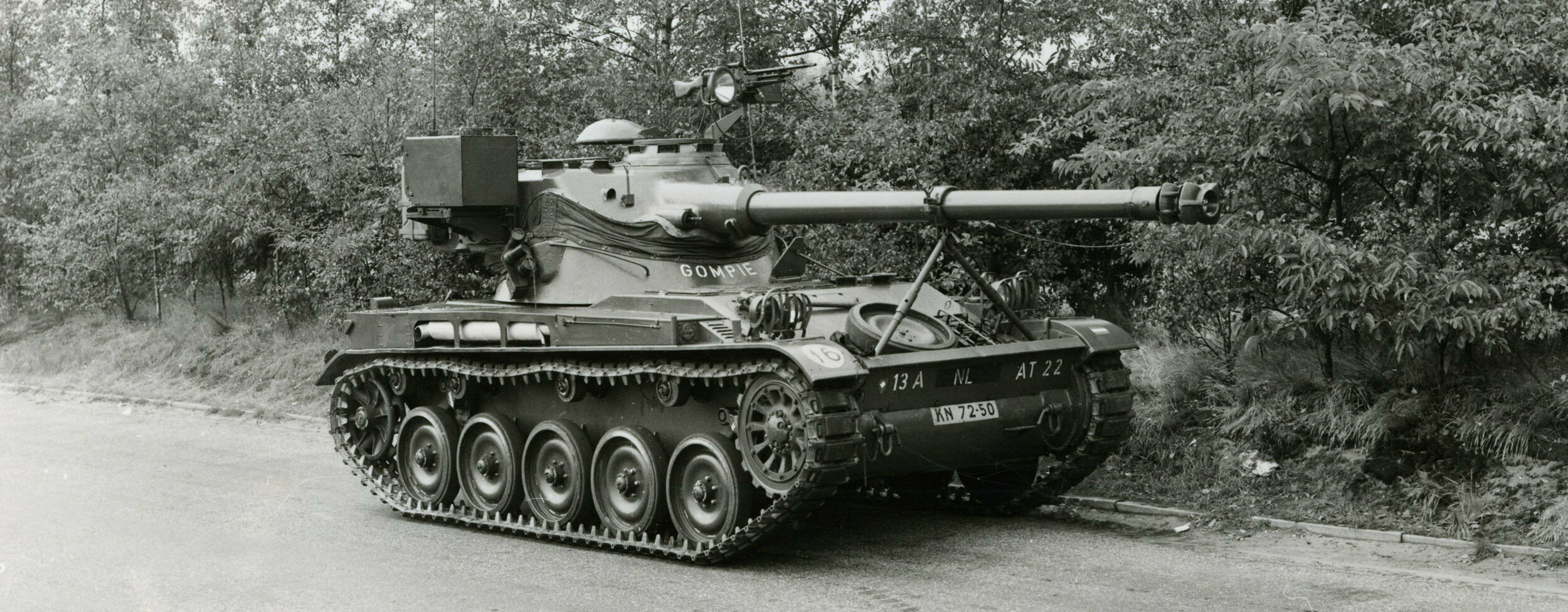
The battalion’s main means of combatting tanks was found in the armoured support company, possessing a single anti-tank platoon with six 106mm M40A1 recoilless rifles mounted on M38A1C “NEKAF” jeeps. These vehicles too had their limitations, being entirely unarmoured and carrying no more than six rounds with their guns.
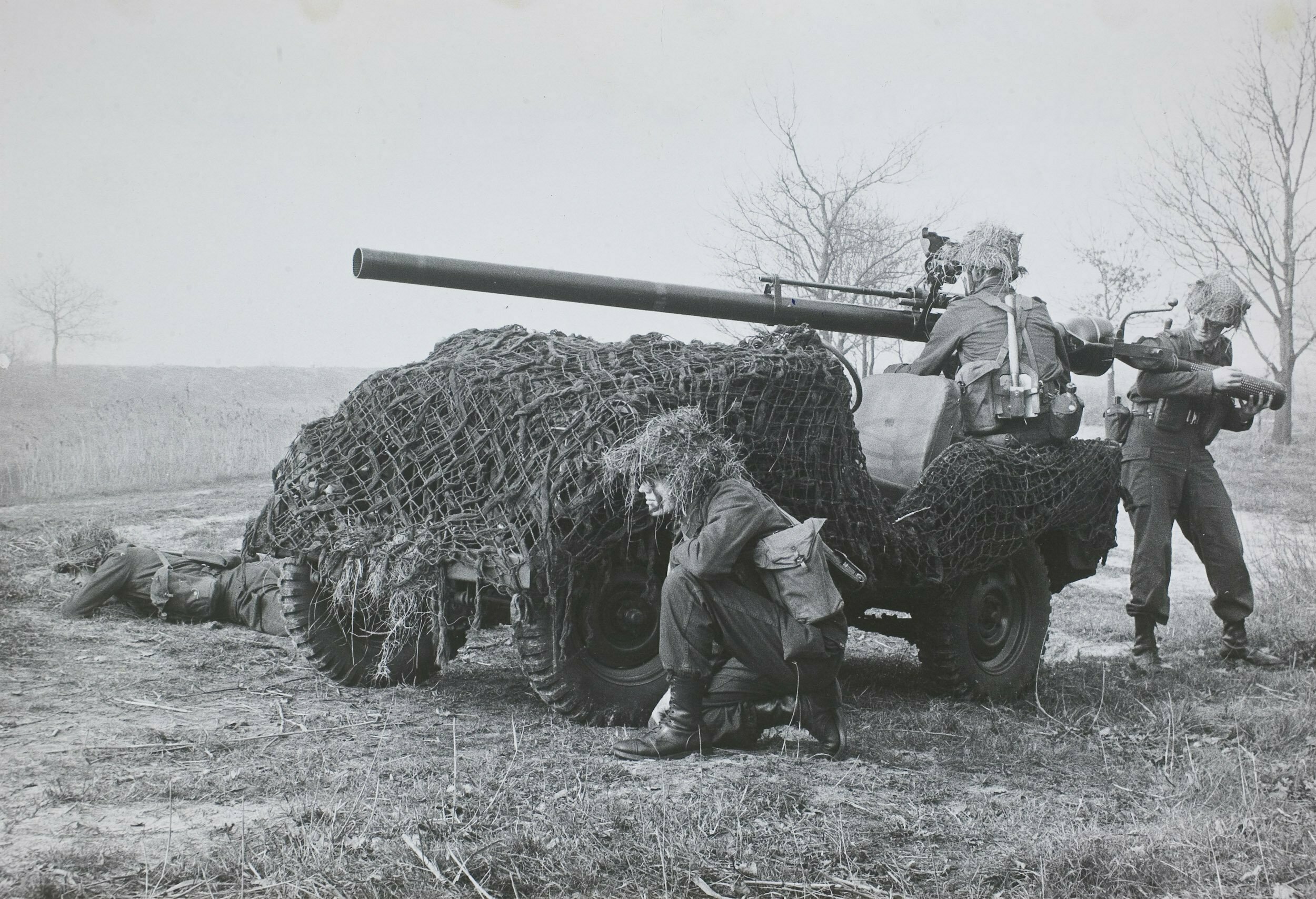
At the company and platoon level, the Carl Gustaf 84mm was found, a (partial) replacement for the 57mm M18 recoilless rifle and 3.5in M20 Bazooka, with the M72 LAW having replaced the Energa rifle grenade.
The Carl Gustaf was an improvement over the Bazooka in nearly all aspects: range, accuracy, night-fighting capability and rate of fire. The only downside was its weight, at 15 kg it was not a light weapon. In spite of all its qualities, it was exactly this last characteristic which dictated the tactics surrounding the weapon.
The M72 LAW was similarly an improvement over the Energa: easier to operate, longer-ranged, more capable, and not requiring a rifle to be launched. Perhaps the only negative of note was its backblast, absent from the rifle grenade it replaced.
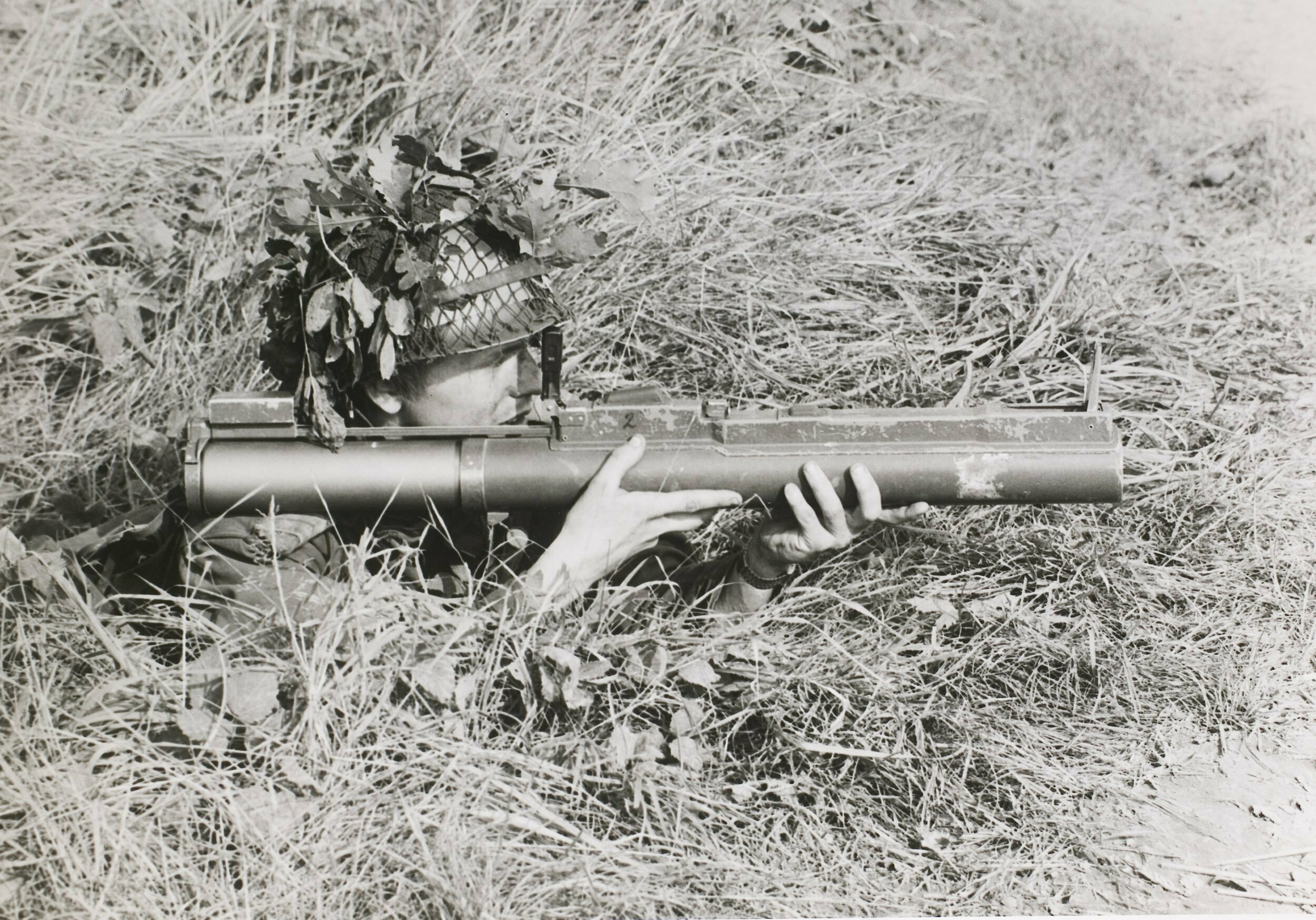
Briefly, the various systems can be summarised as such:
| 105mm L/44 on AMX lttk | TLV 106mm M40A1 on M38A1 Nekaf | TLV 84mm Carl Gustaf M2 | M72A1 LAW | |
|---|---|---|---|---|
| Scale of issue | 15 to an armoured infantry brigade | 6 to an armoured infantry battalion | 8 to an armoured infantry company: 2 per company headquarters 2 per armoured infantry platoon |
Varies, 4 to 12 per infantry APC (YP-408 or AMX) |
| Weight | 16 tonnes | 1700 kg | 15.3 kg | 2.12 kg |
| Crew | 3 | 4 | 2 | 1 |
| Ammunitionload | 27× HEAT 5× HE |
6× HEAT | 4× HEAT | Single-shot, disposable Typically, two per foxhole |
| RHAe penetration | 400mm | 400mm | 400mm | 250mm |
| Range(stationary target) | 1500 m | 1800 m | 500 m | 200 m |
| Range(moving target) | 1000 m | 400 m | ||
| Night-sights | Active infra-red | Active infra-red (limited to 700 yds) | Active infra-red | None |
Two is one, one is none
In spite of the Carl Gustaf’s favourable characteristics, the weapon was distributed in an odd manner, with two weapons operated by the platoon commander’s squad and two more being present in the company headquarters, in the latter case supposedly to allow the company commander to directly influence anti-tank combat.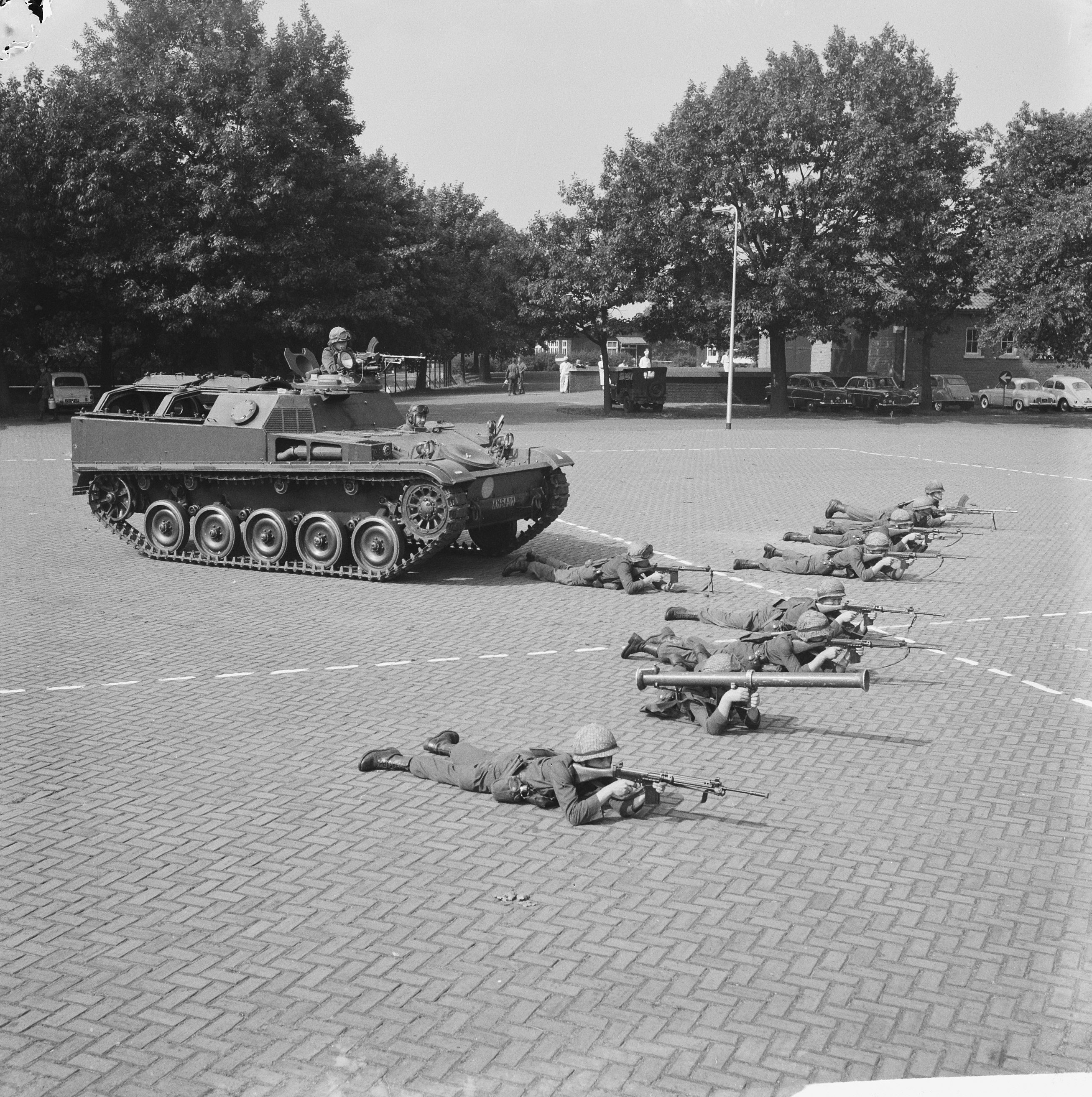
Note the M20 Bazooka, issued at the time one per squad
These issues did not go unnoticed, leading to calls for more Carl Gustavs in military journals:
Below, a 1972-1973 study on the topic is presented. Touching upon the trade-offs between a pure “rifle” squad and added anti-tank capability, the study discusses all facets related to reorganising and retraining the panterserinfanteriegroep, peloton, and compagnie, leading to the eventual reorganisation and introduction of a 9th Carl Gustaf in 1978.The Gustaf is, due to its weight and required ammunition, limited by the carrying capacity of its two-man team. It is thus less mobile and as a result more vulnerable. Successful use of the weapon must therefore be sought in its rate of fire, the amount of ammunition present with the weapon, and the use of multiple guns in the same sector. As opening fire at the maximum range will betray the firer’s position, positions must be changed often so as to escape the enemy’s return fire. The initial salvo of multiple weapons in the same sector affords the greatest opportunities, after which fire will be less effective as the enemy concentrates its fire on our antitank weapons. Moving to an alternate firing position will take time. Leaving the initial firing position by foot to move to the alternate firing positions will increase the Gustaf team’s vulnerability. A minimum of two weapons in the same sector is therefore necessary to ensure continuous fire at a range of 500 m.
It is however interesting to note the current allocation of the Carl Gustaf and their ammunition across the different echelons. As noted, the current allocation of two Carl Gustavs to the infantry platoon is regarded as inadequate with regards to ensuring continuous fire.
The two Carl Gustavs assigned to the company headquarters are regarded as being of little use, as they will be assigned to those platoons that find themselves up front. Creating main points of effort [Zwaartepunten, Schwerpunkte] at the company level is regarded as a doubtfully useful practice. The amount of ammunition carried by the Gustaf teams is insufficient, and will require riflemen to bring up ammunition to the firing position. The timely presence of ammunition is of key importance. It is not unthinkable only a small percentage of the necessary ammunition can be brought up to the Gustaf.
All of this pleads for more Gustavs and more ammunition at the platoon level.
As the poor ratio of available troops to the frontage to be covered will necessitate strongpoints, the maximum range Gustaf’s maximum range of 500 m must be regarded as insufficient. The company is forced to enter into combat at close range with a considerably stronger foe, with all the odds favouring the enemy.
Study, 15 December 1972
1.a. Defensive combat is, principally, combat against armoured targets.
b. This applies to all manoeuvre elements partaking in combat.
c. The basis of combat is, as it concerns the infantry, the infantry squad.
d. It’s evident the infantry squad therefore partakes in combat against armoured targets.
e. The entire character of tactics and training of infantrymen (squads, platoons, and even companies)
is based on the MAG machine gun, FAL rifle, incidentally with the addition of the 84mm Carl Gustaf.
f. As such, the right mindset – the anti-armour mindset – is not present with the troops.
This manifests itself quite obviously during standardised exercises and during basic training,
amongst others the exercise of the infantry squad in the defence, which – certainly in principle – is outdated by some generations.
g. It is therefore logical to replace the MAG machine gun – as a squad weapon – with a portable anti-armour weapon with reasonable range. [emphasis added]
h. The 84 mm Carl Gustaf is currently available.
Change the TOE (01.1083/02).
- One 84mm Carl Gustaf is organic to the infantry squad.
- One 84mm Carl Gustaf is organic to the infantry company headquarters.
a. Training must – from the very start – centre around the anti-armour weapon.
b. The right mindset will thus quickly be cultivated.
c. The infantry company’s requirement will increase with two (2) 84mm Carl Gustaf and with 24 projectiles.
d. The load plan for the armoured infantry vehicles [AMX APC] will have to be revised.
e. The MAG machine gun will have to serve to protect the squad anti-armour weapon.
f. The riflemen will have to serve as ammunition bearers for crew-served weapons.
De Brigade-Generaal der Infanterie
Commandant 43 Pantserbrigade
(W.A.F.A. Clumpkens)
Study, 15 January 1973
1. Problem statementInvestigate which measures must be taken, to enable the redistribution of the 84 mm Carl Gustaf at the armoured infantry squad level.
Consider with great care the consequences with regards to the organisation, equipment and personnel of the squad,
as well as the load plan of the AMX APC (squad) and AMX APC (platoon HQ).
2. Facts
a. The potential enemy operates with armoured personnel carriers and tanks in their first echelon,
with a rapid deployement to tank-mechanized infantry integration at the lowest level
(conforming to VS 30-200, Velddienst strijdkrachten USSR confidentieel), resulting in defensive combat primarily oriented against armoured targets.
b. According to current 43 Pantserbrigade standing orders,
the main task of the armoured infantry battalion will be to occupy and hold terrain, and to destroy (dis)mounted enemy infantry.
c. Under its current organisation, the armoured infantry company possesses – in addition to other anti-tank weapons
- 8 Carl Gustaf 84mm recoilless rifles with an effective range of 400 (moving targets) to 500 metres (stationary targets).
d. When redistributing the 84mm Carl Gustaf,
the personnel and materiel of TOE infantry company (AMX) 01.1083.02
must be taken as a basis, with the understanding that two 84mm Carl Gustaf recoilless rifles have been added.
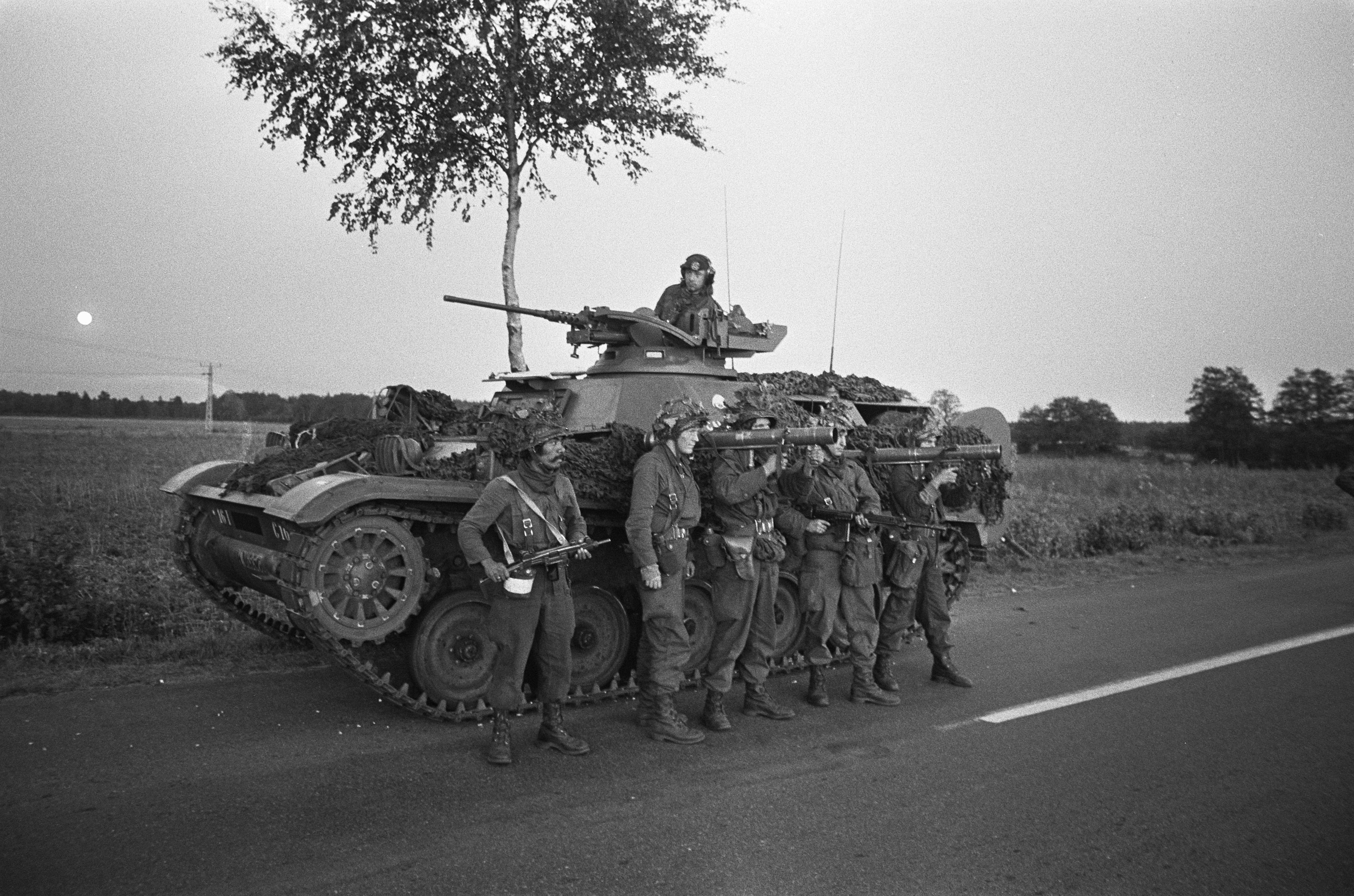
3. Considerations
a. General
The primary requirement is for the armoured infantry squad to remain
capable of executing its current tasks, although a change of emphasis takes place. Its anti-armour task is
expanded considerably. The armoured infantry company’s character and combat power is primarily determined by its nine armoured infantry squads.
These squads derive their combat power from:
- The vehicle’s machine guns [M2 Browning]
- The light machine guns [MAG]
- The rifles [FAL]
- The bayonets, hand grenades and mines
- Their anti-armour capability in the form of 12 M72 LAW 66mm rockets per squad.
The armoured infantry company’s combat power is – save for its morale, training etc. – further strengthened with 8 recoilless rifles, 84mm Carl Gustaf (operated by two-man team) and six rifles, provided with a day sight and infra-red night sight, operated by regular riflemen.
In the current organisation, the gunner and assistant gunner for the Carl Gustaf 84mm are equipped with a [FN Browning High-Power] pistol and UZI submachine gun respectively.
When redistributing the 84mm Carl Gustaf,
the following options may be realised concerning personnel and their individual weapons.
(1) The current Carl Gustaf teams – a total of 16 privates – can be redistributed over the armoured infantry squads, keeping their current individual weapons, reducing rifle strength by two.
Disadvantages:
(a) The loss of two rifles in the armoured infantry squad, resulting in the inability to execute a number of infantry tasks.
(b) A surplus of 16 riflemen, whom, apart from leadership, require a different task
and need to be distributed across the company and platoon vehicles. The primary problem will be
their new role: under whose leadership, when, where and in what manner will they be employed?
(2) The armoured infantry squads maintain their current organisation, but are additionally equipped with the 84mm Carl Gustaf, to be operated by two riflemen. The original 16 Carl Gustaf (assistant) gunners will be trained as:
6 designated marksmen (“snipers”, 2 per platoon)
4 privates for the 10th Carl Gustaf, two gunners, two assistant gunners (one active team and one replacement team)
6 gunners and assistant gunners for [additional] light machine guns (1 light machine gun team per platoon)
Advantages:
(a) The infantry squad can execute all required tasks, with the condition that the Carl Gustaf is only left behind on the armoured personnel carrier on the explicit orders of the platoon commander, allowing the gunner and assistant gunner to deploy as riflemen.
(b) The platoon’s anti-personnel firepower is amended with the addition of 1 [MAG] light machine gun.
(c) The “snipers” (also operators of the rifle infra-red night sight) are employed by the platoon commander, with the assumption, that they will be more effectively employed as specialists; their use at the platoon level further means the squad can fully employ its riflemen as “regular” riflemen.
(3) Option 2 is selected, as this allows the infantry squad to fulfil all its assigned tasks. The infantry platoon’s firepower is amended with a Carl Gustaf and MAG machine gun. It is assumed the armoured infantry company can, in short time, be equipped with additional Carl Gustaf recoilless rifles.
| Dismount element | |||||||||||
|---|---|---|---|---|---|---|---|---|---|---|---|
| Current situation, 1973 | Option 1 | Option 2 | Implemented changes, 1978 | ||||||||
| Squad vehicle | |||||||||||
| Role | Individual weapon | Collective weapon | Role | Individual weapon | Collective weapon | Role | Individual weapon | Collective weapon | Role | Individual weapon | Collective weapon |
| Squad leader | FAL | Squad leader | FAL | Squad leader | FAL | Squad leader | FAL | ||||
| Deputy squad leader | FAL | Deputy squad leader | FAL | Deputy squad leader | FAL | Deputy squad leader | FAL | ||||
| Rifleman | FAL DMR | Rifleman | FAL DMR[10] | Rifleman | FAL | Rifleman | FAL | ||||
| Rifleman | FAL | Rifleman | FAL | Rifleman | FAL | Rifleman | FAL | ||||
| Rifleman | FAL | Carl Gustaf gunner | M46 Browning | CG M2 | Carl Gustaf gunner | FAL | CG M2 | Carl Gustaf gunner | M61 Uzi | CG M2 | |
| Rifleman | FAL | Carl Gustaf assistant gunner | M61 Uzi | Carl Gustaf assistant gunner | FAL | Carl Gustaf assistant gunner | FAL | ||||
| MAG gunner | M46 Browning | MAG | MAG gunner | M46 Browning | MAG | MAG gunner | M46 Browning | MAG | MAG gunner | M46 Browning | MAG |
| MAG assistant gunner | M46 Browning | MAG assistant gunner | M46 Browning | MAG assistant gunner | M46 Browning | MAG assistant gunner | FAL | ||||
| Squad total | |||||||||||
| FAL | 5 | 4 | 6 | 6 | |||||||
| FAL DMR | 2 out of 3 squads | 2 out of 3 squads | 0 | 0 | |||||||
| CG M2 | 0 | 1 | 1 | 1 | |||||||
| MAG | 1 | 1 | 1 | 1 | |||||||
| M46 | 2 | 3 | 2 | 1 | |||||||
| M61 Uzi | 0 | 1 | 0 | 1 | |||||||
| Platoon | |||||||||||
| Platoon commander | M61 Uzi | Platoon commander | M61 Uzi | Platoon commander | M61 Uzi | Platoon commander | M61 Uzi | ||||
| Platoon sergeant | FAL | Platoon sergeant | FAL | Platoon sergeant | FAL | Platoon sergeant | FAL | ||||
| Runner | FAL | Runner | FAL | Runner | FAL | Runner | FAL | ||||
| Carl Gustaf gunner | M46 Browning | CG M2 | Rifleman | FAL | MAG gunner | M46 Browning | MAG | MAG gunner | M46 Browning | MAG | |
| Carl Gustaf assistant gunner | M61 Uzi | Rifleman | FAL | MAG assistant gunner | M46 Browning | MAG assistant gunner | FAL | ||||
| Carl Gustaf gunner | M46 Browning | CG M2 | Rifleman | FAL | Designated marksman | FAL DMR | Designated marksman | FAL DMR | |||
| Carl Gustaf assistant gunner | M61 Uzi | Rifleman | FAL | Designated marksman | FAL DMR | Designated marksman | FAL DMR | ||||
| Platoon total | |||||||||||
| FAL | 18 | 16 | 20 | 21 | |||||||
| FAL DMR | 2 | 2 | 2 | 2 | |||||||
| CG M2 | 2 | 2 | 3 | 3 | |||||||
| MAG | 3 | 3 | 4 | 4 | |||||||
| M46 | 8 | 9 | 8 | 4 | |||||||
| M61 Uzi | 3 | 4 | 1 | 4 | |||||||
| Company commander vehicle | |||||||||||
| Company commander | M46 Browning | Company commander | M46 Browning | Company commander | M46 Browning | Company commander | M46 Browning | ||||
| Sergeant, signals | M61 Uzi | Sergeant, signals | M61 Uzi | Sergeant, signals | M61 Uzi | Sergeant, signals | M61 Uzi | ||||
| Carl Gustaf gunner | M46 Browning | CG M2 | Rifleman | FAL | Carl Gustaf gunner | M46 Browning | CG M2 | ||||
| Carl Gustaf assistant gunner | M61 Uzi | Rifleman | FAL | Carl Gustaf assistant gunner | M61 Uzi | ||||||
| Deputy company commander vehicle | |||||||||||
| Deputy company commander | M61 Uzi | Deputy company commander | M61 Uzi | Deputy company commander | M61 Uzi | Deputy company commander | M61 Uzi | ||||
| Radiotelephone operator | M61 Uzi | Radiotelephone operator | M61 Uzi | Radiotelephone operator | M61 Uzi | Radiotelephone operator | M61 Uzi | ||||
| Carl Gustaf gunner | M46 Browning | CG M2 | Rifleman | FAL | Reserve Carl Gustaf gunner | M46 Browning | |||||
| Carl Gustaf assistant gunner | M61 Uzi | Rifleman | FAL | Reserve Carl Gustaf assistant gunner | M61 Uzi | ||||||
| Company command group total | |||||||||||
| FAL | 0 | 4 | 0 | 0 | |||||||
| FAL DMR | 0 | 0 | 0 | 0 | |||||||
| CG M2 | 2 | 0 | 1 | 0 | |||||||
| MAG | 0 | 0 | 0 | 0 | |||||||
| M46 | 3 | 1 | 3 | 1 | |||||||
| M61 Uzi | 5 | 3 | 5 | 3 | |||||||
b. Consequences
(1) Armoured Infantry Squad
(a) Load Plan
(see addendum B: APC-squad vehicle load plan).
In addition to the current load, room must be made for: 1 Carl Gustaf 84mm, 1 chest infra-red night sight,
4 ammunition tubes for 84mm rounds (the remaining ammo is carried in the cargo APC of the battalion’s headquarters and services company), 3 pouches with accessories and spare parts, and a camouflage net.
Some space has become available due to the loss of the FAL infra-red night sight.
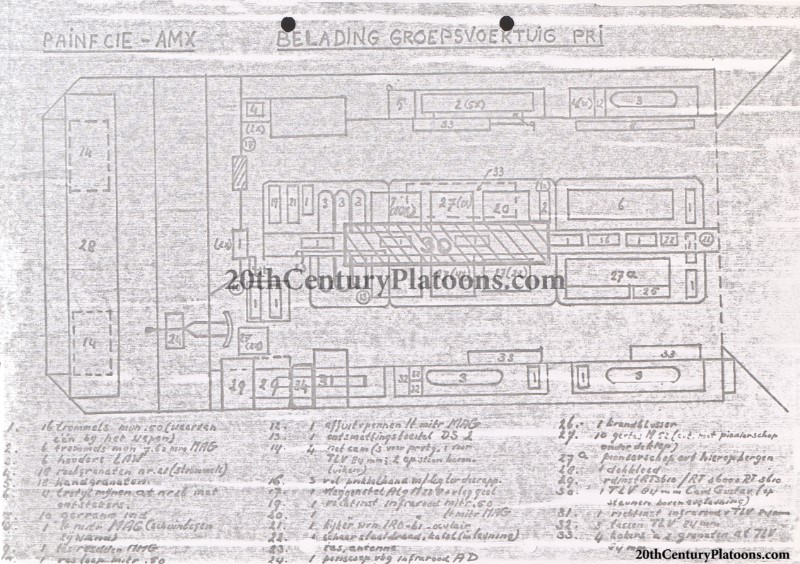
(b) Personnel and weaponry
(see addendum A: TOE)
The nos. 3 and 5 (per VS 7-440/3) will act as Carl Gustaf gunner and assistant gunner. The current no. 2 will take over the no. 3’s secondary tasks – in this case back-up gunner and radio operator. In addition to the nos. 3 and 5, the two riflemen (nos. 2 and 4) are to be trained on the Carl Gustaf, for the purposes of serving as a back-up Carl Gustaf team. (see addendum D).
(c) Tactics
Instead of the vehicle’s machine gun or the light machine gun,
the Carl Gustaf is now the armoured infantry squad’s most important weapon.
As such, both during training of the team as well as during combat, the weapon is have priority. (see addendum D: Thoughts on the training of Carl Gustaf teams, squads leaders and platoon commanders).
i. Attack
During the attack, Carl Gustaf teams can deploy as riflemen, covered by the MAG light machine gun. When dismounting on the move, the Carl Gustaf team is the last to leave the vehicle. The squad leader assigns sectors of fire.
ii. Advance
When encountering resistance, the Carl Gustaf is deployed against enemy tanks or armoured vehicles.
When clearing an obstacle or mines, the Carl Gustaf covers the riflemen tasked with clearing said obstacle or mine.
When crossing a chokepoint, the Carl Gustaf initially remains in place, covering the flanks. The Carl Gustaf team moves to the enemy’s side of the chokepoint on the squad leader’s orders, with the goal of destroying enemy armour.
iii. Defence
Fire must be opened at the maximum effective range. A field of fire of at least 700 metres must be available, allowing the gunner and assistant gunner to find their target, load, and aim. Secondary positions must be prepared, with 84mm ammunition stored in them. Attention must be paid to the backblast and dust generated from firing, as these can betray the weapon’s position.
iv. Delaying actions
Although fire must initially be opened by tanks or long-range anti-tank weapons, the Carl Gustaf is to be positioned so as to cover a flank, or to cover the front at close range.
In general, see the points made for the defence.
(d) Conclusion
Trials with B-Compagnie – 47 Pantserinfanteriebataljon have shown the load plan as per addendum B does not cause any problems. Concerning tactics, load plans and squad organisation, VS 7-440/3 must be modified. Various training pamphlets must be modified in the spirit of addendum D.
(2) Platoon headquarters and company headquarters
(a) Load plan
(see addendum C: APC-platoon vehicle load plan)
In addition to the current load, room must be made for: 2 rifles, 2 infra-red night sights FAL, 2 rifle scopes KRR62, 1 MAG light machine gun (complete), 1 light machine gun mount, 6 ammunition boxes with 7.62 MAG ammunition (230 rounds each).
Removed from the current load are:
2 Carl Gustaf 84mm, 2 infra-red night sights, 8 ammunition tubes with 2× 84mm rounds each, 6 pouches with accessories and spare parts.
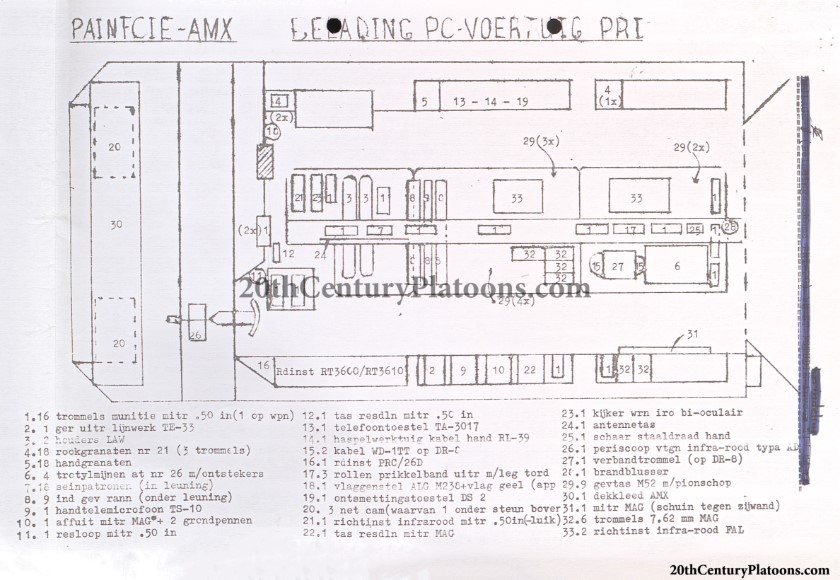
(b) Personnel and weaponry
Two designated marksmen will have to be trained per platoon, to be employed by the platoon commander. They will take the place of the nos. 3 and 4 in the platoon HQ vehicle (as per VS 7-440/3 p. 13). They can be supplied with spare rifles from the supply group. In case it is desired the six rifles (with scope) are issued as additional equipment, the designated marksmen can [additionally] be supplied with a [unscoped] rifle as an individual weapon. These rifles are drawn from the maintenance group, which receives 4 spare Uzi submachine guns and 2 spare pistols from the supply group. (See addendum A, p. B-5 and B-6). The infantry platoon is also assigned a 4th light machine gun team. This team will be seated in the platoon HQ APC in stead of the nos. 5 and 6. They are employed by the platoon commander. The required light machine guns are drawn from the supply group (regrettably, no infra-red night sight is available).
The 4th light machine gun can be employed to:
- Provide security for the platoon command post
- Increase the fire density in the platoon sector
- Act as a reserve gun
The company headquarters is assigned a Carl Gustaf team and a reserve team. These four men are armed with Uzi submachine guns and are seated in the company commander APC and deputy company commander APC respectively. Their tasks are:
- Operating the Carl Gustaf 84mm
- Local protection of the company command post
- Guard and patrol duties
- Runner duties
- Radio duties
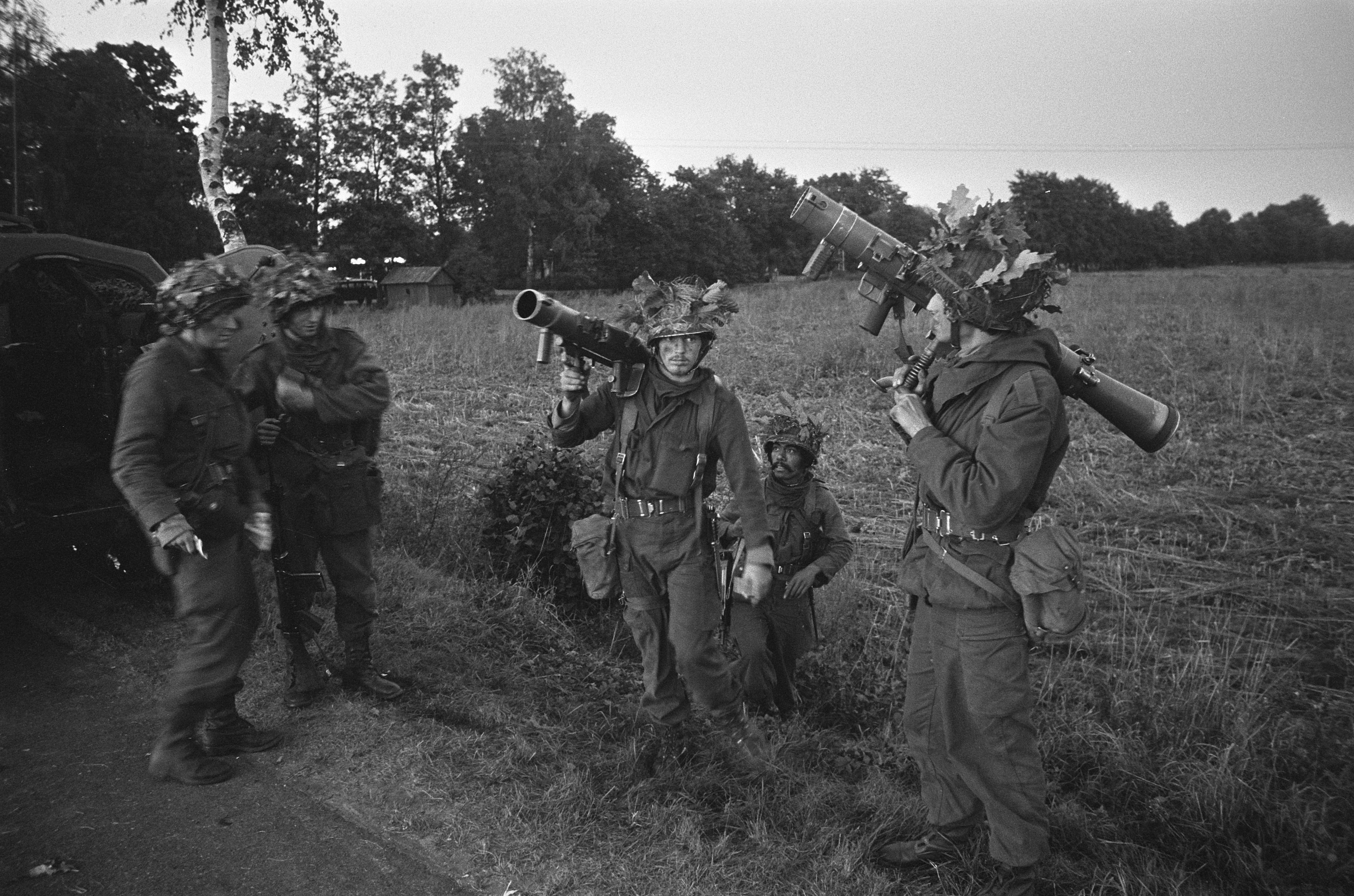
The redistribution of the Carl Gustaf 84mm is possible. It requires a change to training and revision of the armoured infantry squad’s tactics. It cultivates an anti-armour mentality and provides the lowest echelon more combat power with regards to the anti-armour task. The armoured infantry squad’s task will consequently be primarily one of anti-armour combat, whilst its capacity to combat personnel remains unchanged. A further advantage is the increase in combat power at the platoon level by the addition of a 4th light machine gun and 2 organic snipers.
5. Recommendationsa. Commander, Army Training Command is to order Commander, Infantry Training Centre to develop guidelines for the revision of platoon commander and squad leader training with regards to tactics and drill of the infantry squad’s Carl Gustaf teams.
b. Commander, Army Training Command is to propose changes to the drill manual for the armoured infantry squad and platoon and the instruction manuals Inf 001 and Inf 002.
c. Finally, it is to be considered to what degree the Harskamp Infantry Training Range and Oldebroek Artillery Training Range can be utilized to allow for modified live fire exercises, based on the modified organisation of the armoured infantry squad and armoured infantry platoon and its anti-armour role.
d. To equip all infantry squads in the same manner, Commander, Land Forces, is to ensure the TOE for the Infantry Company is modified as soon as possible, with the addition of 2 Carl Gustaf 84mm (complete), 2 infra-red night sights for the Carl Gustaf, 2 camouflage nets, 2 dust goggles, 2 MX 991/U lanterns, and the appropriate basic combat load (24 rounds).
Ultimately, in 1978, most of the changes to the squad, platoon, and company were implemented: the squads received the Carl Gustaf and the platoon HQ squad found its firepower supplemented with a MAG machine gun and two designated marksman. The 10th Carl Gustaf was never added to the company, instead, the platoon would soon find its marksmen replaced by M47 Dragon gunners, adding a further 2 anti-tank systems to each platoon. The company commander and his deputy found their APCs quite empty: the former Carl Gustaf (assistant) gunners were simply removed from the TOE.
The “kachelpijp”, as the weapon was sometimes known, served until 1994, until replaced by the AT-4, essentially a single-shot variant of the Gustaf. A disappointing weapon in the eyes of the Dutch Army, the M72 LAW was soon reintroduced in Afghanistan, with the Panzerfaust 3 (both with and without Dynarange module) forming the basis of squad anti-armour tactics.
Footnotes
